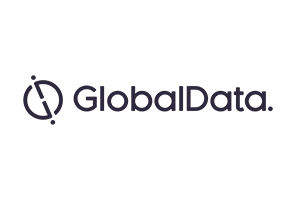
GlobalData anticipates that the sales of AML therapeutics in the seven major markets (7MM) of the US, France, Germany, Italy, Spain, the UK, and Japan, defined as the sales of branded therapeutics and generic chemotherapy regimens, are expected to grow from $406m in 2016 to $1.5bn in 2026, at a compound annual growth rate (CAGR) of 14.0%.
The figure below outlines the top-line sales by country / region for AML across the 7MM in 2016 and 2026.

The US makes up the significant majority of the AML market in 2016, with sales of $231m and is expected to further strengthen its position in the next decade as sales increase to $1.12bn in 2026, at a CAGR of 17.1%. US dominance among the 7MM is primarily due to its relatively large number of incident cases of AML compared with the countries in the 5EU of France, Germany, Italy, Spain, and the UK, or Japan. There is expected to be faster uptake of new therapies, more expensive branded drug prices, and more branded therapies being approved in the US versus the 5EU or Japan in the next decade.
In 2016, the sales of AML drugs in the 5EU and Japan were $119m and $57m, respectively, and accounted for 29% and 14% of the AML drug sales in the 7MM. By 2026, sales in the two markets will reach $268m and $120m, respectively, with CAGRs of 8.5% and 7.8%.
See Also:
In addition to factors promoting the growth of the AML market in the US, a major factor slowing growth in the 5EU and Japan is the loss of patent protection during the next decade for multiple branded products such as Vidaza, Dacogen (5EU only), Rydapt, Vyxeos, and guadecitabine. As a result, while sales of AML therapies in the US market will grow up to 74.2% of the total sales in 7MM, sales of AML therapies in the 5EU and Japan will reduce to 17.8% and 8.0%, respectively, of the total sales in 7MM in 2026.
How well do you really know your competitors?
Access the most comprehensive Company Profiles on the market, powered by GlobalData. Save hours of research. Gain competitive edge.

Thank you!
Your download email will arrive shortly
Not ready to buy yet? Download a free sample
We are confident about the unique quality of our Company Profiles. However, we want you to make the most beneficial decision for your business, so we offer a free sample that you can download by submitting the below form
By GlobalDataFigure below outlines the top-line sales forecast by drug class for AML in 2016 and 2026.

In 2016, the AML market predominantly consisted of hypomethylating agents (HMA) Vidaza and Dacogen, and generic chemotherapies such as cytarabine and daunorubicin / idarubicin.
An appreciable change is evident in the composition of the AML therapeutics market in 2026, as the major drivers of growth are expected to be the sales of branded targeted therapies such as the FLT3 TKIs quizartinib and gilteritinib, developed by Daiichi Sankyo and Astellas, respectively; HMAs such as Celgene’s CC-486 and Otsuka’s guadecitabine; Pfizer’s anti-CD33 antibody-drug conjugate (ADC) Mylotarg; and other branded therapies including AbbVie’s BCL-2 inhibitor Venclexta/Venclyxto, Jazz’s Vyxeos, and Agios/Celgene’s IDH2 inhibitor enasidenib.
It has been challenging to develop effective therapies for AML, as the biology of the disease is poorly understood. Recent history is filled with disappointments in AML development, with the most recent being the discontinuation of clinical development for Seattle Genetics’ vadastuximab talirine due to excessive toxicity in combination with HMAs and the failures of Qinprezo, sapacitabine, and volasertib to meet their primary endpoints.
Despite the recent failure of late-stage pipeline candidates, GlobalData anticipates the approval of multiple pipeline products with diverse mechanisms of action in the next decade. The launch and uptake of new therapies targeting patients with the highest unmet needs, including the elderly, relapsed and refractory, and those with FLT3 and IDH2 mutations, will drive growth in the AML market between 2016 and 2026.



